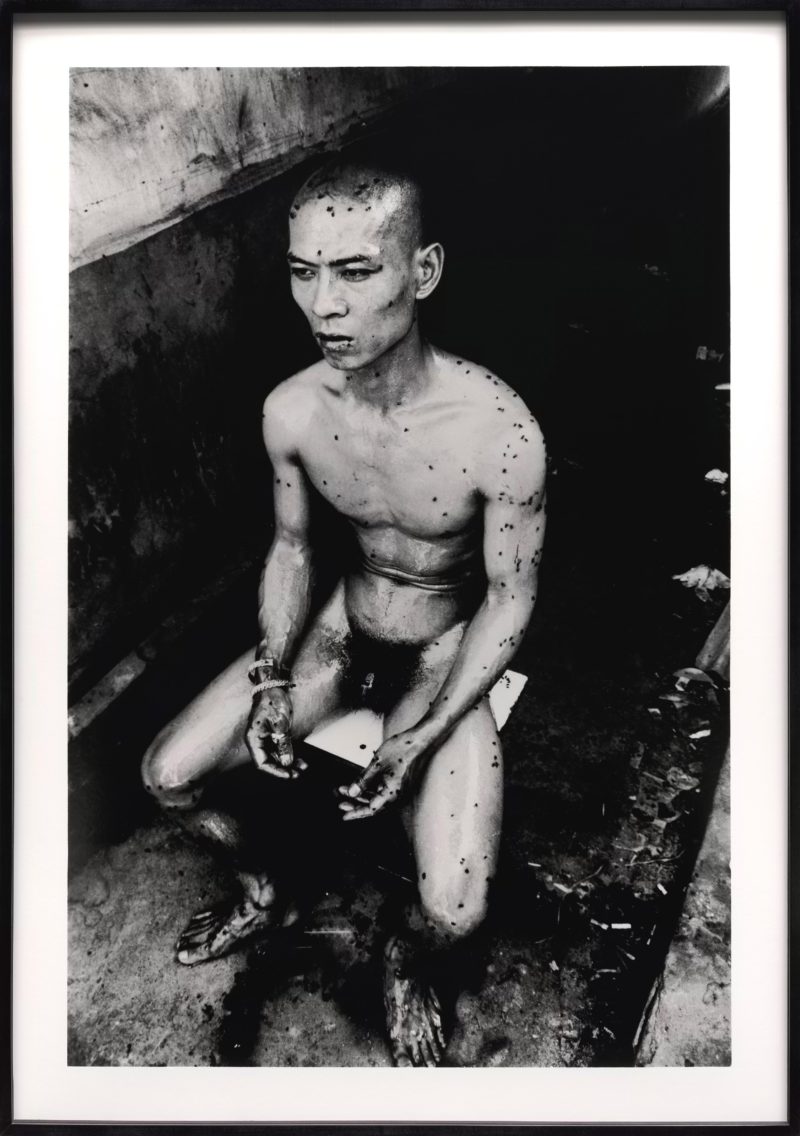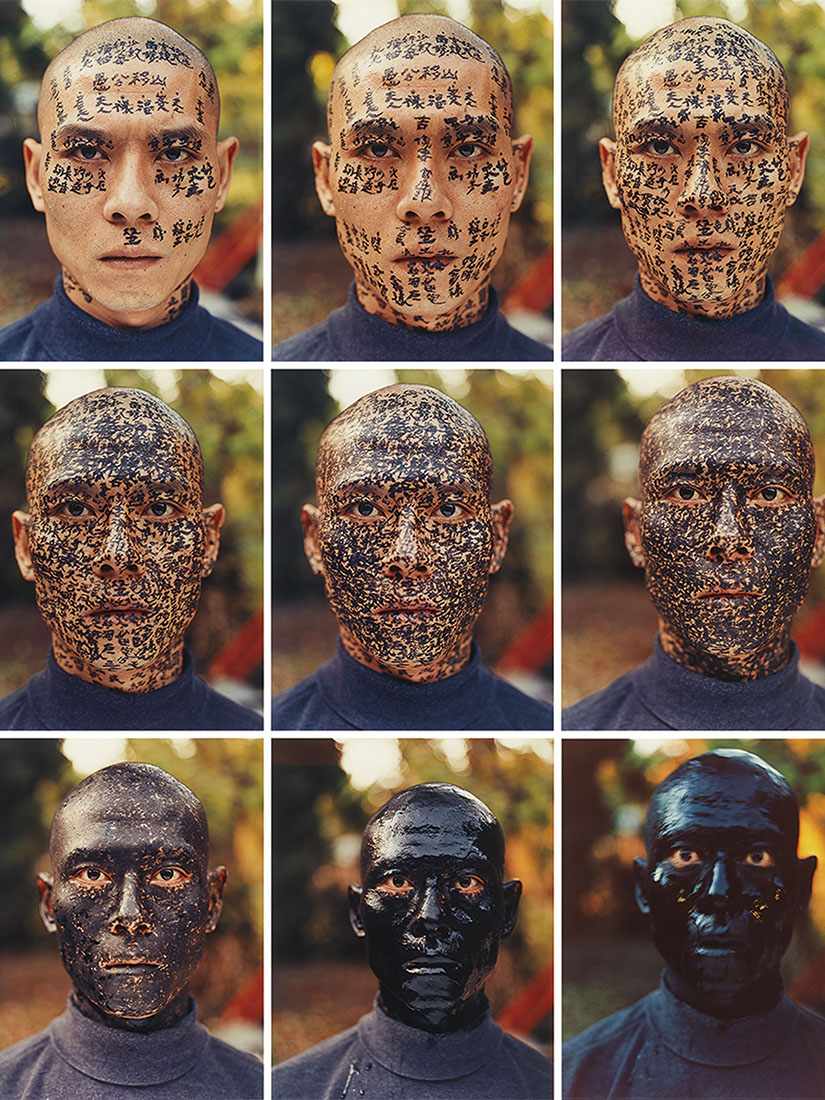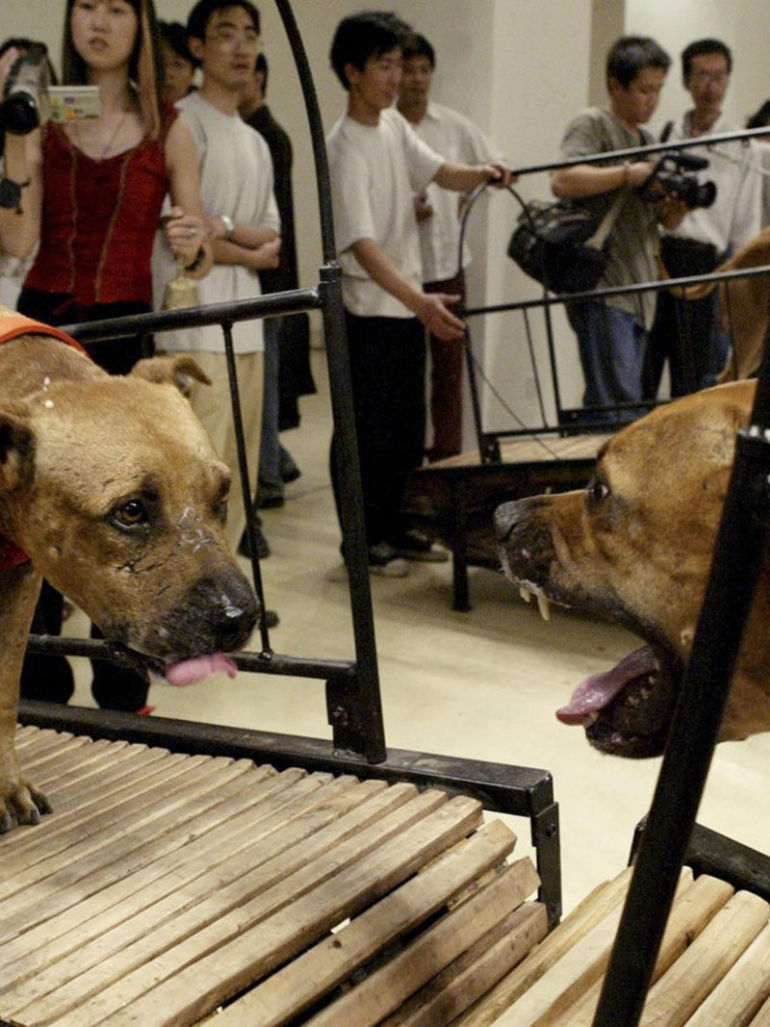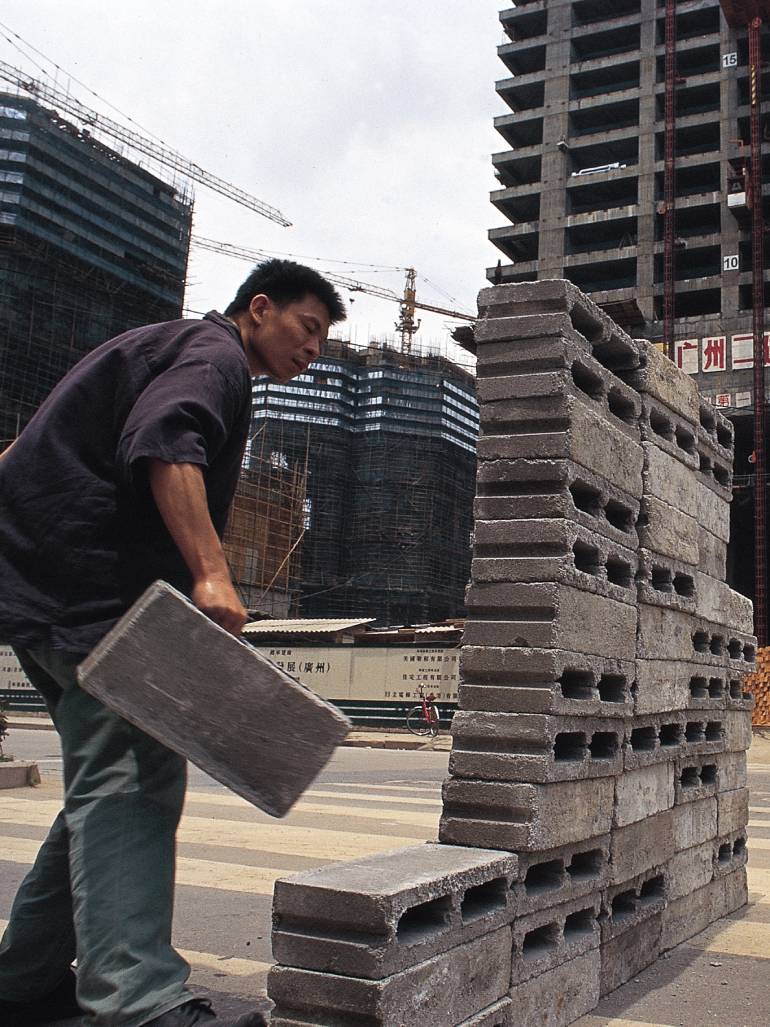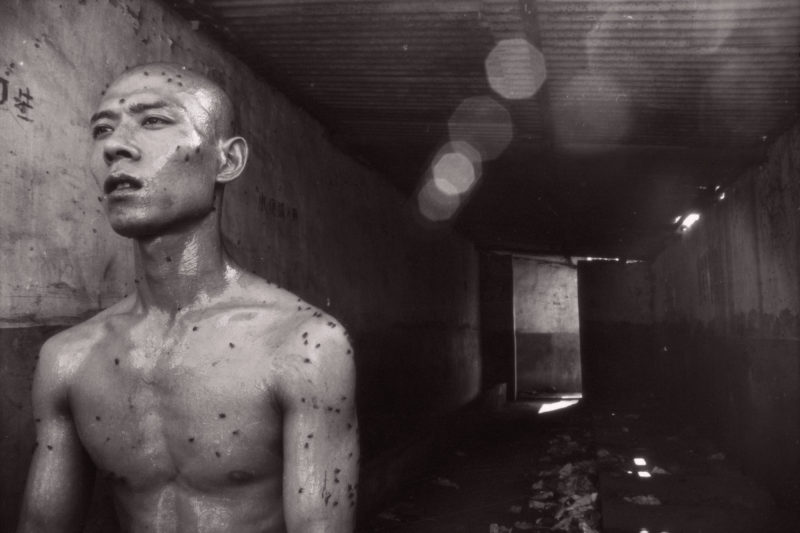
Introduction
Zhang Huan 1 is no stranger to controversy. Having attended school when China was undergoing a dramatic time in its history, Zhang learned a lot from the years of protests and demonstrations that would be staged in front of Tiananmen Square 2 in Beijing. As an avid fan of Avant-garde art, Zhang did not really have adequate resources at his disposal that would allow him to execute his artistic vision. As such, and not surprisingly, Zhang decided to change the way he expressed himself by adopting a more provocative and transgressive form of performance art, which was later photographed and documented.
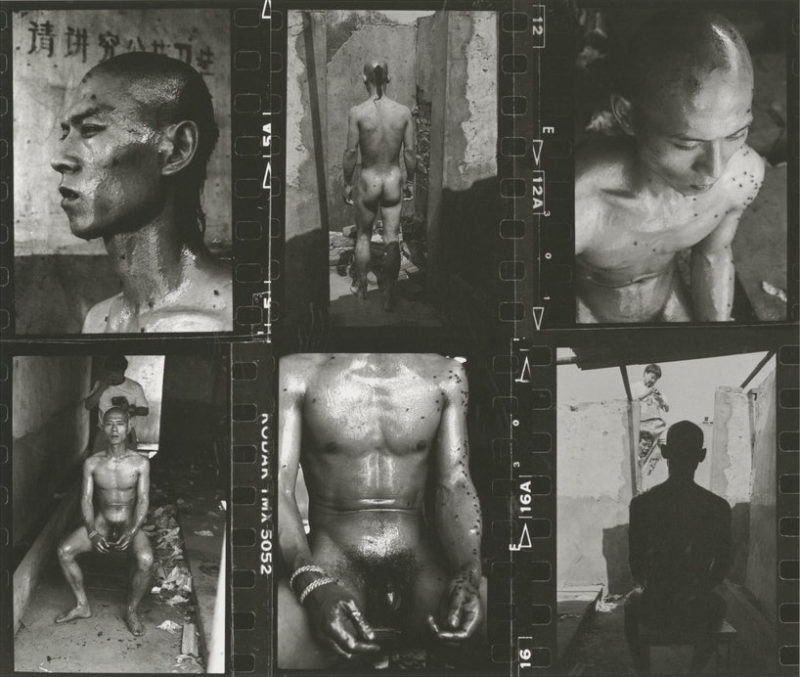
Why did Zhang Huan spend hours in a public toilet?
Zhang’s performance art was always characterized by some degree of pain. For instance, one of his most famous performances is his 12 Square Meters from 1994, where Zhang covered himself in a mixture of fish oil and honey from head to toe. He then sat stock-still on a peddle stool in a public latrine for hours on end as he let different types of insects crawling all over his body. The photographs from this performance were taken by fellow artist and photographer Rong Rong.
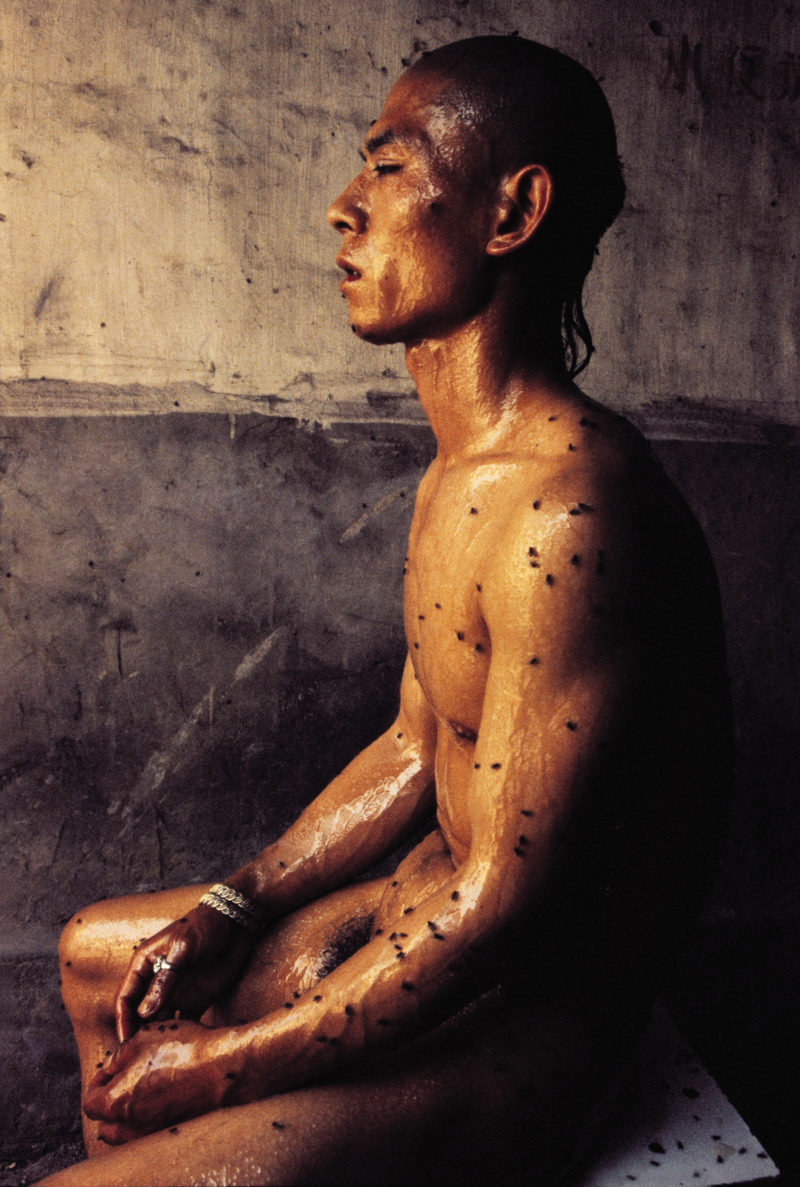
The meaning of the performance
This performance was termed as being subversive and dangerous by many of the people that witnessed it. However, there was a method to Zhang’s madness. Zhang opted to perform this piece in a stinky public toilet that was 12 square meters in size, located in some remote part of the village. When Zhang had finished his performance, he cleaned himself from a small pond and as he did, he left groups of dead flies and insects floating on the pond.
By subjecting himself to the unbearable smell from the toilet as well as the swarms of bugs and flies that covered his body, Zhang was demonstrating his acceptance of his identity as a struggling artist as well as his acceptance of his environment and the local community, which was characterized by poverty and struggle.
Zhang was clearly suffering
Zhang was clearly suffering through the entire experience, struggling to maintain his composure in one of the most inhumane conditions and environments. This art performance allowed him to experience an indispensable human existence that had been reduced to the level of human waste.
Why is the performance still relevant?
It also allowed him to portray the Chinese people’s relationship with their environment, where even today, public toilets in terrible conditions still continue to exist in the most poverty-stricken communities in China and even major cities. In the shadows of the showy skyscrapers and ultramodern buildings, Zhang’s artistic performance remains as relevant today as it was in 1994, proving that Zhang’s social critique of his society was always accurate.
